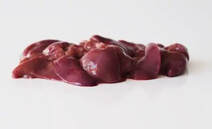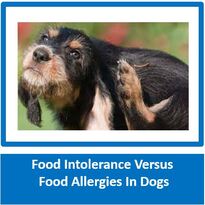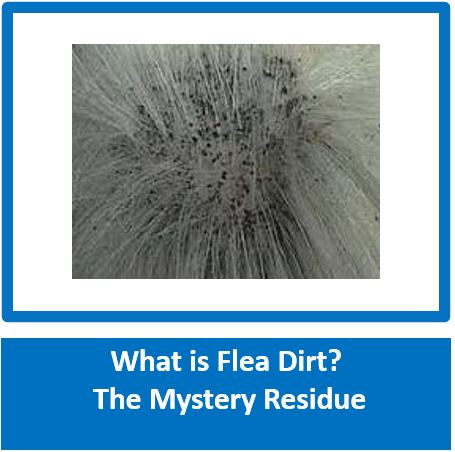|
Although the majority of dogs love liver, one has to be careful that you do not feed too much. If you offer liver treats on a regular basis, and find that your dog is itchy, especially in paws, tummy, had and face, your dog could have had an allergic reaction to liver - not all owners are aware that a dog may have liver-related allergies. The Allergy test was developed to measure the highest level of accuracy, approximately 100 of the most commonly known allergens that your pet may be reacting to. An allergy test is non-invasive, takes a few seconds and can be done in the comfort of your own homes. www.muttmix.co.za
AS OF 18.5.23 SALE PRICE OF R1850 APPLIES |
Dogs love liver - but how much liver is too much - can too much do harm?
www.thepossiblecanine.com
(Really interesting site, plus they have courses on nutrition)
www.thepossiblecanine.com
(Really interesting site, plus they have courses on nutrition)
 Pic - https://solidstarts.com/
Pic - https://solidstarts.com/
Everyone who loves dogs knows that dogs love liver! Treats containing liver abound, recipes for liver “brownies” are perennial favourites (you can find one here on this blog, but there are countless versions) and simple baked treats are a mainstay as “bait” for show dogs and rewards for hard working canines in all kinds of sport and performance work. In home made recipes, some organ meat is always included, to boost nutrient levels, especially Vitamin A, and copper. But how much liver is enough, and is it possible to overdo it? Are all kinds – beef, lamb, chicken, pork – created equal? In this entry we’ll take a little closer look at liver; what it offers your dog, how to prepare it – and why you really can get too much of a good thing.
Let’s start with what’s good about liver, why it should be included in a canine diet, if it’s tolerated.
1) Liver is nature’s most abundant source of Vitamin A, in the most bioavailable form for carnivores. (This is why cod liver oil is so different from fish body oil, the vitamin content).
2) Liver is an excellent source of protein, all the B vitamins, and iron.
3) Liver is very high in copper, an important nutrient that can be low in home made diets.
4) Liver contains Vitamin D which supports the immune system, muscles & bone growth
5) Oh yes, and dogs love the stuff…can’t forget that one.
Look for a supplier that uses rural raised, clean air living, grass fed, hormone free Beef - always buy the best you can afford.
Now, what might some of the issues be?
1) Liver is very high in copper (yes, this can be a problem if fed too much. We want to hit in around the Recommended Allowance, not go, you know, 20 times above it. That carries its own problems)
2) Liver is very high in phosphorus, which we like to watch especially with growth diets, seniors and very carefully with kidney disease.
3) Liver is high in purines, a big no-no for dogs with uric acid stones(especially common in the Dalmatian, and serious stuff): http://www.veterinarypartner.com/Content.plx?P=PRINT&A=1683
4) Although we mention above that what is good is that liver contains Vit. A, we need to be aware that too much Vit. A can poison dogs, creating symptoms that in include tremors, convulsions and peeling skin.
5) There is always the risk of salmonella and campylobacter in raw organs which can be particularly harmful to young, old or unwell dogs.
6) When a dog has an allergic reaction, it is very often the protein that is the culprit. A good idea is to do an allergy test
7) Always check with your vet before giving liver to your dog if your dog suffers from any disease. With some diseases, liver can do harm.
This part can get technical, so bear with me. I don’t, for the record, believe that every meal has to be “perfectly balanced” but I can easily demonstrate how not paying attention and relying on guesswork will create imbalances- which in turn, can have serious backlash over time. It’s good to know what is in our food – not just the toxins, which many are concerned about, but the nutrients! So to figure out how much liver to add, it’s smart to start off calculating your dog’s phosphorus and copper requirements. Then, calculate how much is in the diet. Often, there will be plenty of phosphorus but low copper. Add just enough liver to bring the copper into the recommended range or a little higher. The exceptions to this of course, would be a cancer or renal diet where we need to restrict copper, or of course, any dog with urate stones. Just take a pass in those cases.
In a cooked diet, I generally need to add anywhere from 1 – 5 ounces per week, depending on the size of the dog. I did a St. Bernard diet yesterday and we’re using six ounces of liver; the dog’s recommended allowance is 35 mgs, and the recipe has 36. The dog’s allowance for phosphorus is 14,000 mgs; with the liver, we have 14,079.(this is beef liver I’m referring to here).
To calculate your dogs RA for phosphorus, follow the same basic procedure I’ve referred to in past entries; take the bodyweight in kilograms to the power of 0.75, then multiply by 100. That’s the DAILY recommended allowance. To find the copper recommendation, take the metabolic number as above, and multiply by 0.2, for the daily ideal level. Of course, you just X these levels by 7 to get the weekly amounts.
That’s the easy part. Figuring out what’s in the diet is harder. You can use a tool like nutrition data, or you can slog it out using the USDA database. In general, my feeling is one ounce a week for a small dog, 2 – 3 for a medium, 4-6 for large and giant breeds. This is not precision nutrition, but it gives an idea of how much we might use in a recipe. I often suggest to clients they reserve the liver I include in their dog’s recipe, and feed as treats. It doesn’t have to go into the batch, just into the dog.
Let’s start with what’s good about liver, why it should be included in a canine diet, if it’s tolerated.
1) Liver is nature’s most abundant source of Vitamin A, in the most bioavailable form for carnivores. (This is why cod liver oil is so different from fish body oil, the vitamin content).
2) Liver is an excellent source of protein, all the B vitamins, and iron.
3) Liver is very high in copper, an important nutrient that can be low in home made diets.
4) Liver contains Vitamin D which supports the immune system, muscles & bone growth
5) Oh yes, and dogs love the stuff…can’t forget that one.
Look for a supplier that uses rural raised, clean air living, grass fed, hormone free Beef - always buy the best you can afford.
Now, what might some of the issues be?
1) Liver is very high in copper (yes, this can be a problem if fed too much. We want to hit in around the Recommended Allowance, not go, you know, 20 times above it. That carries its own problems)
2) Liver is very high in phosphorus, which we like to watch especially with growth diets, seniors and very carefully with kidney disease.
3) Liver is high in purines, a big no-no for dogs with uric acid stones(especially common in the Dalmatian, and serious stuff): http://www.veterinarypartner.com/Content.plx?P=PRINT&A=1683
4) Although we mention above that what is good is that liver contains Vit. A, we need to be aware that too much Vit. A can poison dogs, creating symptoms that in include tremors, convulsions and peeling skin.
5) There is always the risk of salmonella and campylobacter in raw organs which can be particularly harmful to young, old or unwell dogs.
6) When a dog has an allergic reaction, it is very often the protein that is the culprit. A good idea is to do an allergy test
7) Always check with your vet before giving liver to your dog if your dog suffers from any disease. With some diseases, liver can do harm.
This part can get technical, so bear with me. I don’t, for the record, believe that every meal has to be “perfectly balanced” but I can easily demonstrate how not paying attention and relying on guesswork will create imbalances- which in turn, can have serious backlash over time. It’s good to know what is in our food – not just the toxins, which many are concerned about, but the nutrients! So to figure out how much liver to add, it’s smart to start off calculating your dog’s phosphorus and copper requirements. Then, calculate how much is in the diet. Often, there will be plenty of phosphorus but low copper. Add just enough liver to bring the copper into the recommended range or a little higher. The exceptions to this of course, would be a cancer or renal diet where we need to restrict copper, or of course, any dog with urate stones. Just take a pass in those cases.
In a cooked diet, I generally need to add anywhere from 1 – 5 ounces per week, depending on the size of the dog. I did a St. Bernard diet yesterday and we’re using six ounces of liver; the dog’s recommended allowance is 35 mgs, and the recipe has 36. The dog’s allowance for phosphorus is 14,000 mgs; with the liver, we have 14,079.(this is beef liver I’m referring to here).
To calculate your dogs RA for phosphorus, follow the same basic procedure I’ve referred to in past entries; take the bodyweight in kilograms to the power of 0.75, then multiply by 100. That’s the DAILY recommended allowance. To find the copper recommendation, take the metabolic number as above, and multiply by 0.2, for the daily ideal level. Of course, you just X these levels by 7 to get the weekly amounts.
That’s the easy part. Figuring out what’s in the diet is harder. You can use a tool like nutrition data, or you can slog it out using the USDA database. In general, my feeling is one ounce a week for a small dog, 2 – 3 for a medium, 4-6 for large and giant breeds. This is not precision nutrition, but it gives an idea of how much we might use in a recipe. I often suggest to clients they reserve the liver I include in their dog’s recipe, and feed as treats. It doesn’t have to go into the batch, just into the dog.
What about different types of liver?
I am often asked if they can be interchanged – and I think, as treats they can ( given I am recommending not using liver in general all the time) but when we’re looking to meet a dietary requirement, different types of liver have different profiles. Here’s a peek at four popular varieties:
Beef Liver
82 grams, cooked weight (this will apply to all varieties)
Calories – 156
Phosphorus- 407 grams (this is substantial, when you consider an equivalent amount of lean muscle meat has about 168 mgs).
Copper– 11.7 mgs (this too is a lot, consider my 72 kg St. Bernard needed only 5 mgs daily.)
Iron – 5.3 mgs
Zinc – 4.3 mgs
I am often asked if they can be interchanged – and I think, as treats they can ( given I am recommending not using liver in general all the time) but when we’re looking to meet a dietary requirement, different types of liver have different profiles. Here’s a peek at four popular varieties:
Beef Liver
82 grams, cooked weight (this will apply to all varieties)
Calories – 156
Phosphorus- 407 grams (this is substantial, when you consider an equivalent amount of lean muscle meat has about 168 mgs).
Copper– 11.7 mgs (this too is a lot, consider my 72 kg St. Bernard needed only 5 mgs daily.)
Iron – 5.3 mgs
Zinc – 4.3 mgs
Calf’s Liver
Calories – 155
Phosphorus – 377 mgs
Copper – 12.3 mgs
Iron – 4.19 mgs
Zinc – 9.2 mgs
Not much difference other than more zinc. These two are more or less interchangeable. But then there is…
Chicken Liver
Calories-136
Phosphorus – 332 mgs
Copper – 0.4 mgs
Iron – 9.5 mgs
Zinc – 3.26mgs
This is significant particularly if one is adding liver to amp up the copper. Note the higher iron, too; seems like a small difference, but small dogs can really be affected. Not interchangeable with calf’s of beef liver. And then we have…
Lamb Liver
Calories– 180
Phosphorus– 344 mgs
Copper -5.8
Iron– 6.79 mgs
Zinc – 6.47 mgs
Other differences include Vitamin A, B12 and selenium. In dietary formulation we learn to pay attention to all of these levels, and aim for an optimal range. Very nutrient -dense foods like liver offer great benefits, but we need to use them properly. Liver is not to be fed as a main protein source, but a garnish, an addition, a booster of the nutrients we’ve highlighted here. Now, as TREATS, I feel you’re ok with a healthy dog, to mix liver types up and use judicious amounts. I like to emphasize heart, muscle meat and eggs, so as to minimize the chance of driving some nutrient levels out of balance. But in a recipe, where we are trying to reach specific levels, yes indeed, all liver is not created equal.
A little more on the topic from the wonderful Chris Kresser; liver is very good for us, too. http://chriskresser.com/how-to-eat-more-organ-meats
One last issue – I often hear that “liver is not healthy because it stores the body’s toxins”. Well, not exactly. I will leave you with this great summary from Mark’s Daily Apple. Yes, liver can contain toxins, but not because it “stores” them. Fish (which we will talk about soon) contains a lot more, generally speaking; feed the best quality you can get, not too much, and if you partake of meat, have some yourself. http://www.marksdailyapple.com/does-the-liver-store-toxins/#axzz2yWsmtSm5
Calories – 155
Phosphorus – 377 mgs
Copper – 12.3 mgs
Iron – 4.19 mgs
Zinc – 9.2 mgs
Not much difference other than more zinc. These two are more or less interchangeable. But then there is…
Chicken Liver
Calories-136
Phosphorus – 332 mgs
Copper – 0.4 mgs
Iron – 9.5 mgs
Zinc – 3.26mgs
This is significant particularly if one is adding liver to amp up the copper. Note the higher iron, too; seems like a small difference, but small dogs can really be affected. Not interchangeable with calf’s of beef liver. And then we have…
Lamb Liver
Calories– 180
Phosphorus– 344 mgs
Copper -5.8
Iron– 6.79 mgs
Zinc – 6.47 mgs
Other differences include Vitamin A, B12 and selenium. In dietary formulation we learn to pay attention to all of these levels, and aim for an optimal range. Very nutrient -dense foods like liver offer great benefits, but we need to use them properly. Liver is not to be fed as a main protein source, but a garnish, an addition, a booster of the nutrients we’ve highlighted here. Now, as TREATS, I feel you’re ok with a healthy dog, to mix liver types up and use judicious amounts. I like to emphasize heart, muscle meat and eggs, so as to minimize the chance of driving some nutrient levels out of balance. But in a recipe, where we are trying to reach specific levels, yes indeed, all liver is not created equal.
A little more on the topic from the wonderful Chris Kresser; liver is very good for us, too. http://chriskresser.com/how-to-eat-more-organ-meats
One last issue – I often hear that “liver is not healthy because it stores the body’s toxins”. Well, not exactly. I will leave you with this great summary from Mark’s Daily Apple. Yes, liver can contain toxins, but not because it “stores” them. Fish (which we will talk about soon) contains a lot more, generally speaking; feed the best quality you can get, not too much, and if you partake of meat, have some yourself. http://www.marksdailyapple.com/does-the-liver-store-toxins/#axzz2yWsmtSm5





